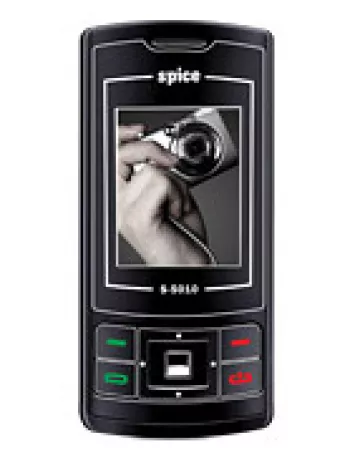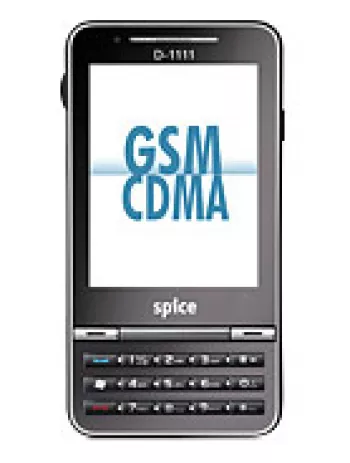
Introduction to Spice Mi-410
The Spice Mi-410 is an Android smartphone that was released in the second quarter of 2011. During this period, Android devices were burgeoning in popularity, and the Mi-410 aimed to capture a segment of the market by offering competitive features at an affordable price. This device was initially launched with Android version 2.2 (Froyo), which was quite popular at the time for its improvements in speed and performance over previous versions. Let's take a deeper look into the features and specifications of the Spice Mi-410.
Design and Build
The Spice Mi-410 sports a minimalist and professional design with dimensions of 122 x 66 x 10 mm. Its 143 g weight provides a substantial feel—firm yet not too burdensome to carry around. The phone's construction is accompanied by a durable and sleek finish available in Silver and Brown colors, giving customers choices to match their style. It utilizes a Mini-SIM slot which reflects the standard specifications of its release era.
Display
At the heart of user interaction is the phone's 4.03-inch TFT display. It offers a resolution of 480 x 800 pixels at a 5:3 aspect ratio, resulting in a pixel density of approximately 232 ppi. While not as vibrant as modern AMOLED screens, the screen's TFT technology still provided decent color replication and clarity for media consumption and browsing tasks, which were quite prevalent uses at the time.
Performance
Powering the Mi-410 is the Qualcomm MSM8255 Snapdragon S2 chipset, paired with an Adreno 205 GPU. The CPU is a single-core 1.0 GHz Scorpion processor, which was relatively potent for 2011 standards, enabling users to run many apps smoothly. Although the 512MB RAM seems underwhelming by today’s benchmarks, in 2011, it was adequate for managing multiple tasks.
Storage
The internal storage of 800MB may seem insufficient given the large file sizes of apps and media today. However, during its time, this was considered manageable, especially with the inclusion of a microSDHC slot that supported expandable storage, thus allowing users to significantly increase their storage capacity for apps, music, and pictures.
Camera
The Spice Mi-410 comes with a single 5 MP rear camera that benefits from auto-focus capabilities and an LED flash. This setup allowed users to capture photos with a fair level of detail and brightness—suitable for sharing on social media platforms like Facebook, which were rapidly growing in popularity. The video capacity at 720p@30fps was quite decent for video capture at the time. While the device does offer a front-facing camera, details on its specifications are scant, which indicates it was mainly intended for simple selfies or video calling.
Battery Life
The removable Li-Ion 1400 mAh battery is a standard feature, allowing users to keep a spare battery for quick swaps—a beneficial feature that many modern phones lack. It claims up to 400 hours of standby time on 2G and 380 hours on 3G, with talk times of about 2 hours and 20 minutes on 2G or 4 hours on 3G. This battery capacity was suitable for moderate use back in 2011 but would likely require more frequent charging in 2023 given enhanced usage patterns.
Network and Connectivity
The phone supports GSM and HSPA technologies, operating within several bands that cover many global locations. Its data speeds top out at HSPA 14.4/5.76 Mbps, which was quite fast for mobile standards at the time. The connectivity suite includes Wi-Fi 802.11 b/g with hotspot functionality, Bluetooth 2.0 with A2DP and EDR for wireless audio, GPS for navigation, FM Radio, and a microUSB port for charging and data transfer.
Additional Features
Sensors like an accelerometer, proximity sensor, and compass enhance user interaction with the device, adding functionalities such as screen orientation adjustment and navigation aids. The Spice Mi-410 also includes a 3.5mm headphone jack, an essential feature for personalizing audio experiences with greater accessibility.
Pricing and Market Positioning
Priced at around 210 EUR during its release, the Spice Mi-410 was positioned as an affordable option in the market. Despite being discontinued now, it represented the growing trend of bringing technological advances to a broader audience without massive price tags. Its robust feature set for the price made it an appealing option for many users around the world at that time.
Conclusion
The Spice Mi-410 stood out at the time for delivering a balanced mixture of performance, feature set, and affordability. As a strong competitor in the early days of Android smartphones, it showcased capabilities that catered to basic smartphone needs and some extra, appealing to a wider audience base. Although its usage has become obsolete today because of the rapid advances in mobile technology, it remains a nostalgic piece that reminded those of the golden era of Android's early development and its strides towards making smartphones accessible to more people.
Key Features of Spice Mi-410
- Supports GSM / HSPA technology with 3G HSDPA bands (900 / 1900 / 2100)
- Powered by Qualcomm MSM8255 Snapdragon S2 chipset with 1.0 GHz Scorpion CPU and Adreno 205 GPU
- 4.03-inch TFT display with 480 x 800 pixels resolution (~232 ppi density)
- 5 MP main camera with autofocus and LED flash, capable of 720p video recording
- Expandable storage via microSDHC card slot
- Lightweight design, weighing only 143 g
- Wi-Fi 802.11 b/g with Wi-Fi hotspot capability
- Includes GPS and A-GPS for positioning
- FM radio with recording capability
- Equipped with essential sensors: Accelerometer, proximity, and compass
- Removable Li-Ion 1400 mAh battery providing up to 400 h standby time (2G)
Spice Mi-410 Main Drawbacks
- Released with Android 2.2 (Froyo), which is outdated by modern standards.
- Display type TFT with only 256K colors, which may result in lower color accuracy and vibrancy.
- Limited internal storage of 800MB, which could restrict app installations and data storage.
- Low RAM of 512MB, potentially affecting multitasking and overall performance.
- Older Bluetooth version 2.0, lacking support for newer Bluetooth features and improvements.
- Relatively small 1400 mAh battery capacity, leading to limited battery life.
- Stand-by and talk time durations are relatively low compared to modern smartphones.
- Discontinued status, indicating no official software updates or support.
- Mini-SIM usage, as modern devices generally use Nano-SIMs.

View Also
More Phones
All Rights Reserved +14266 Phones © Mobilawy 2025

























